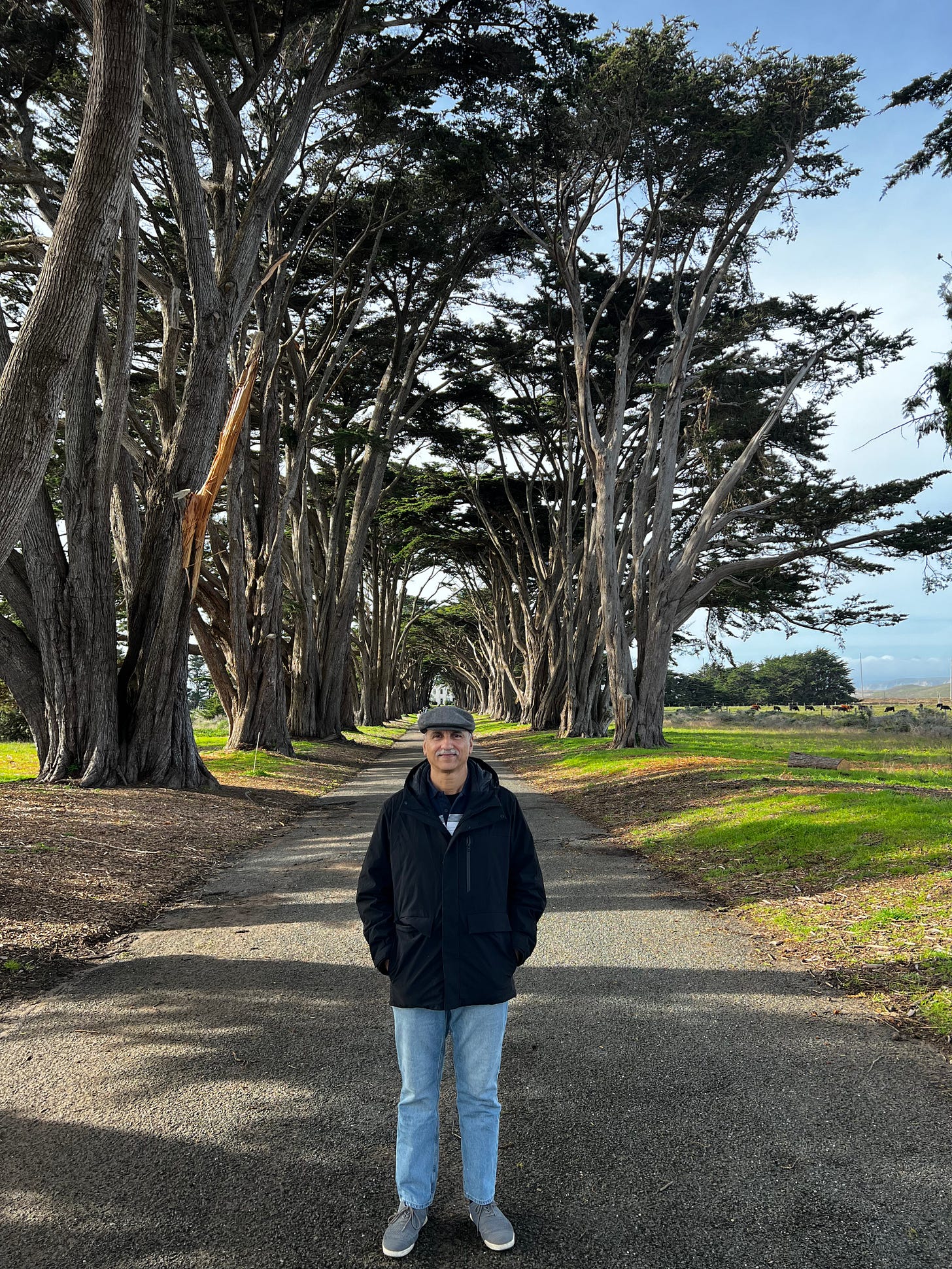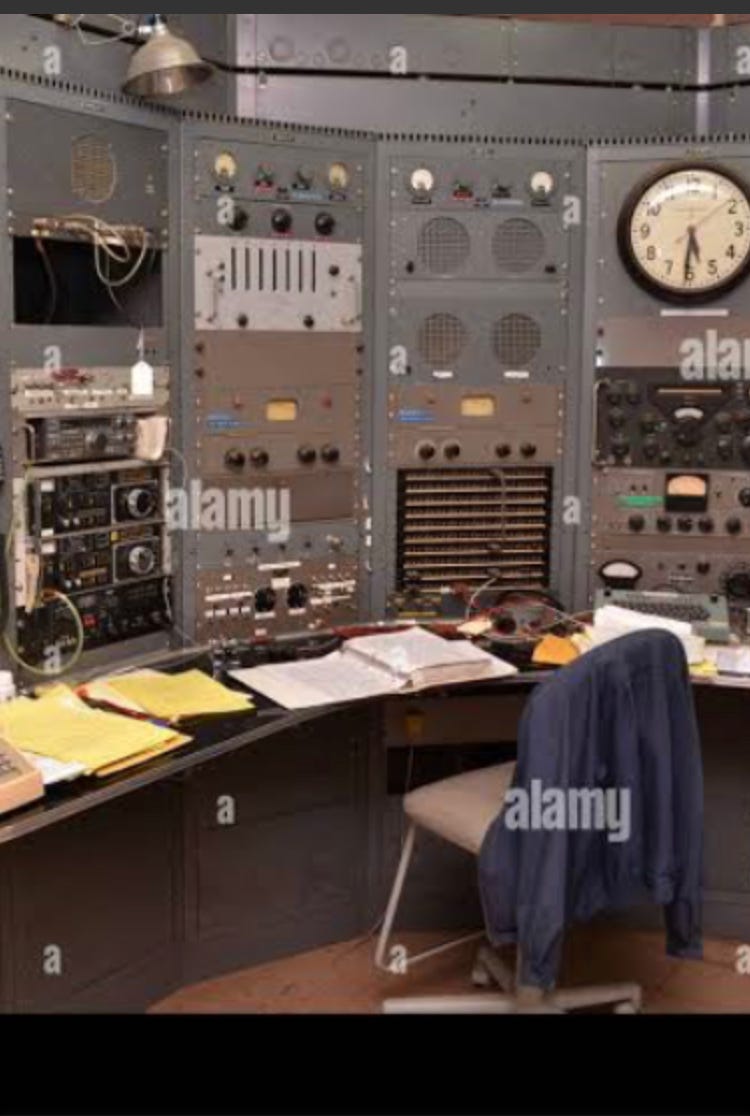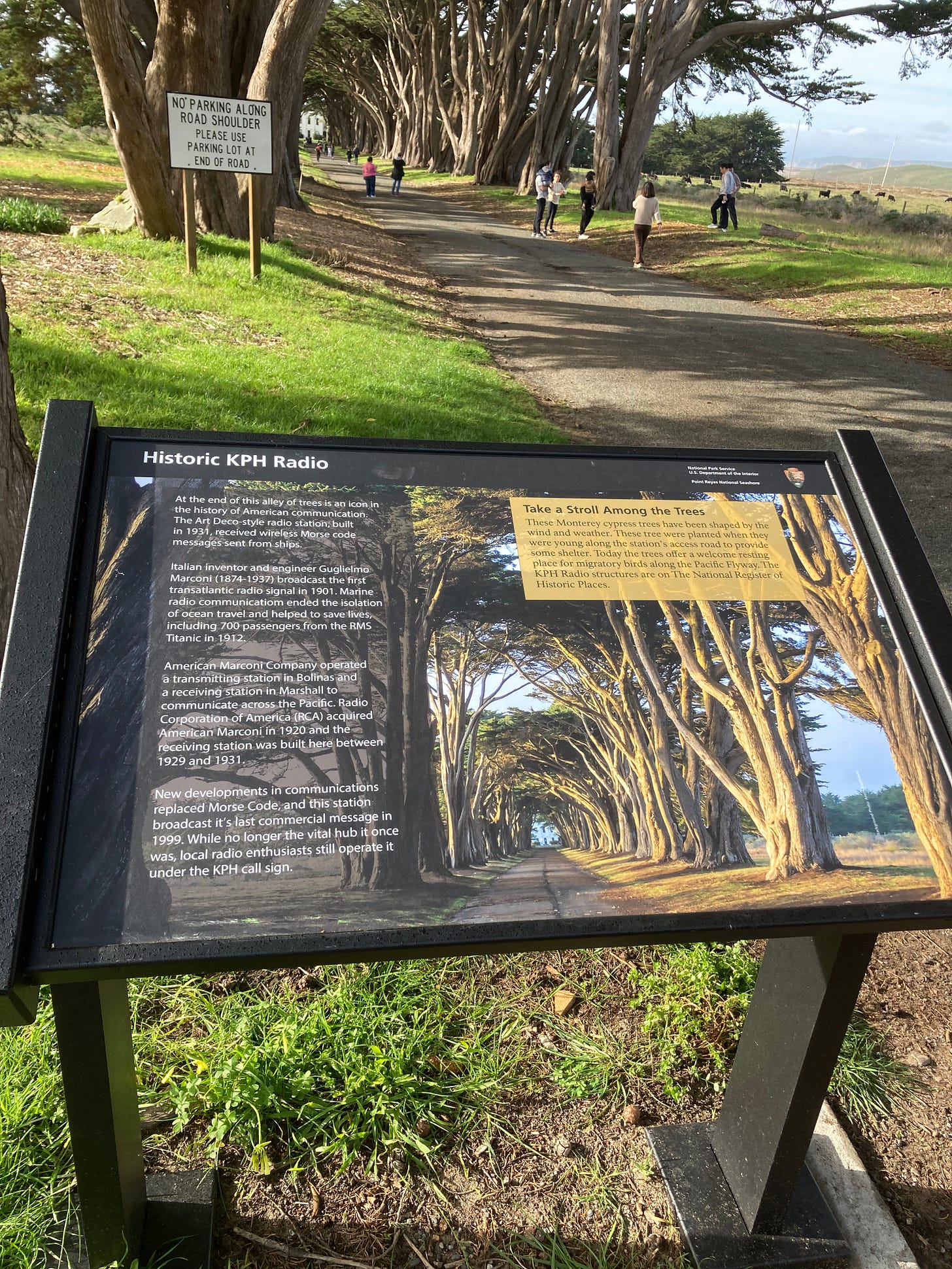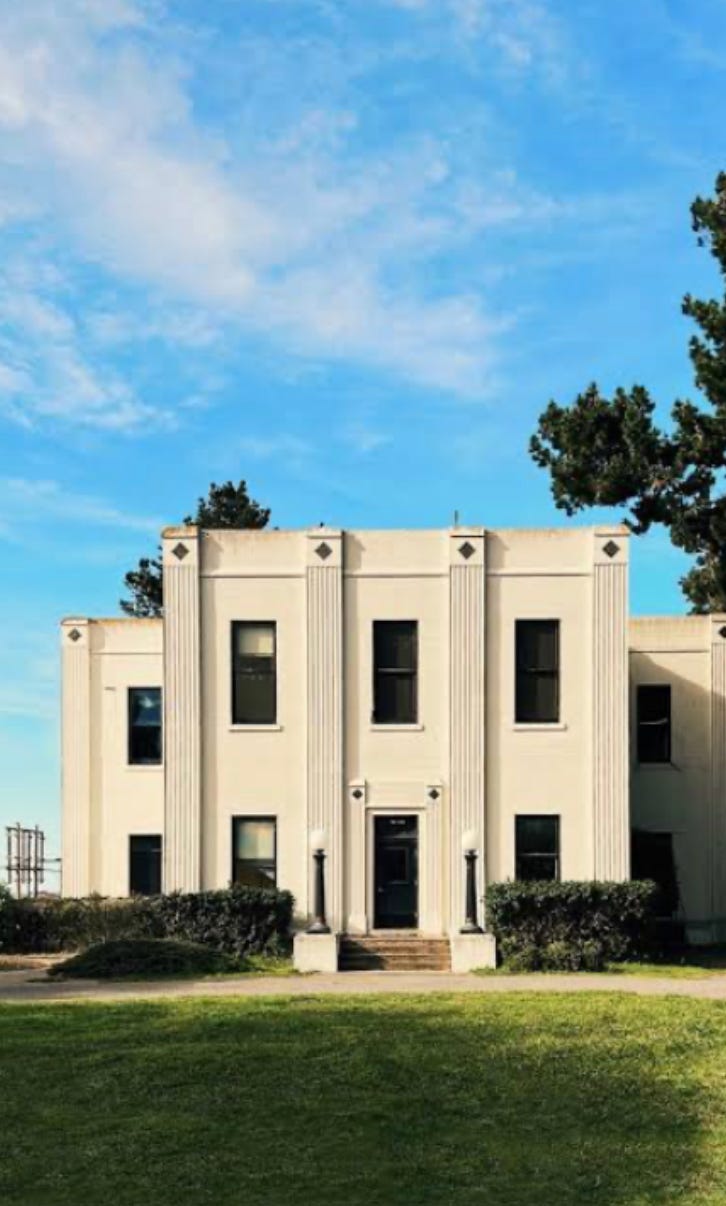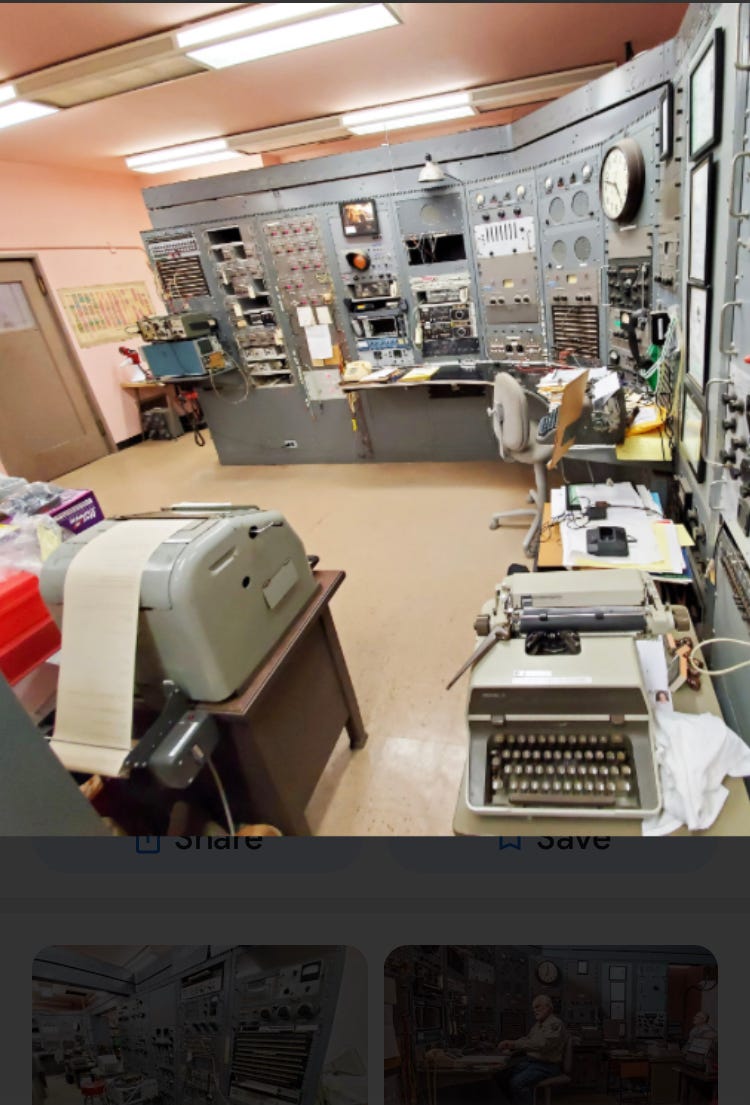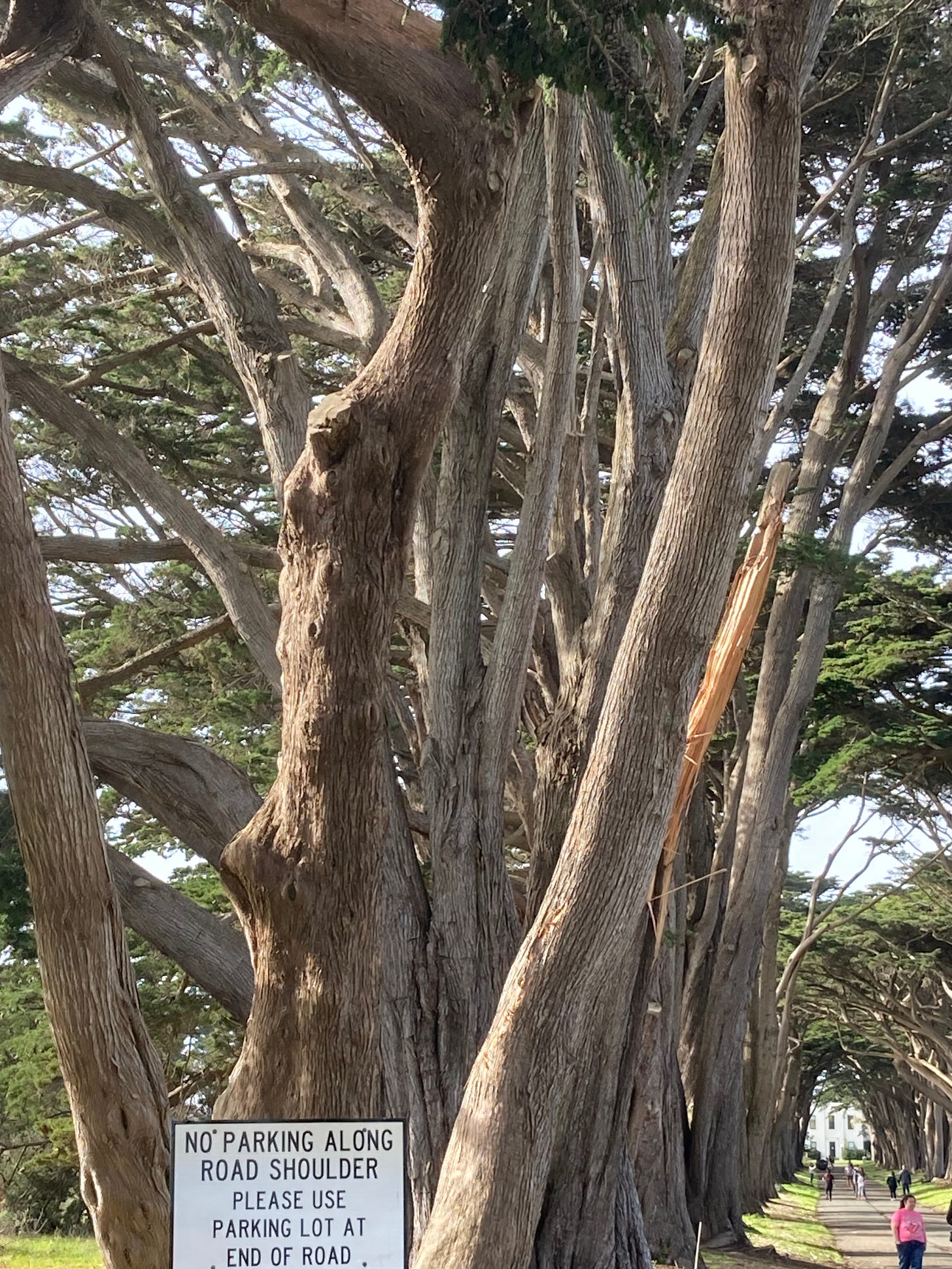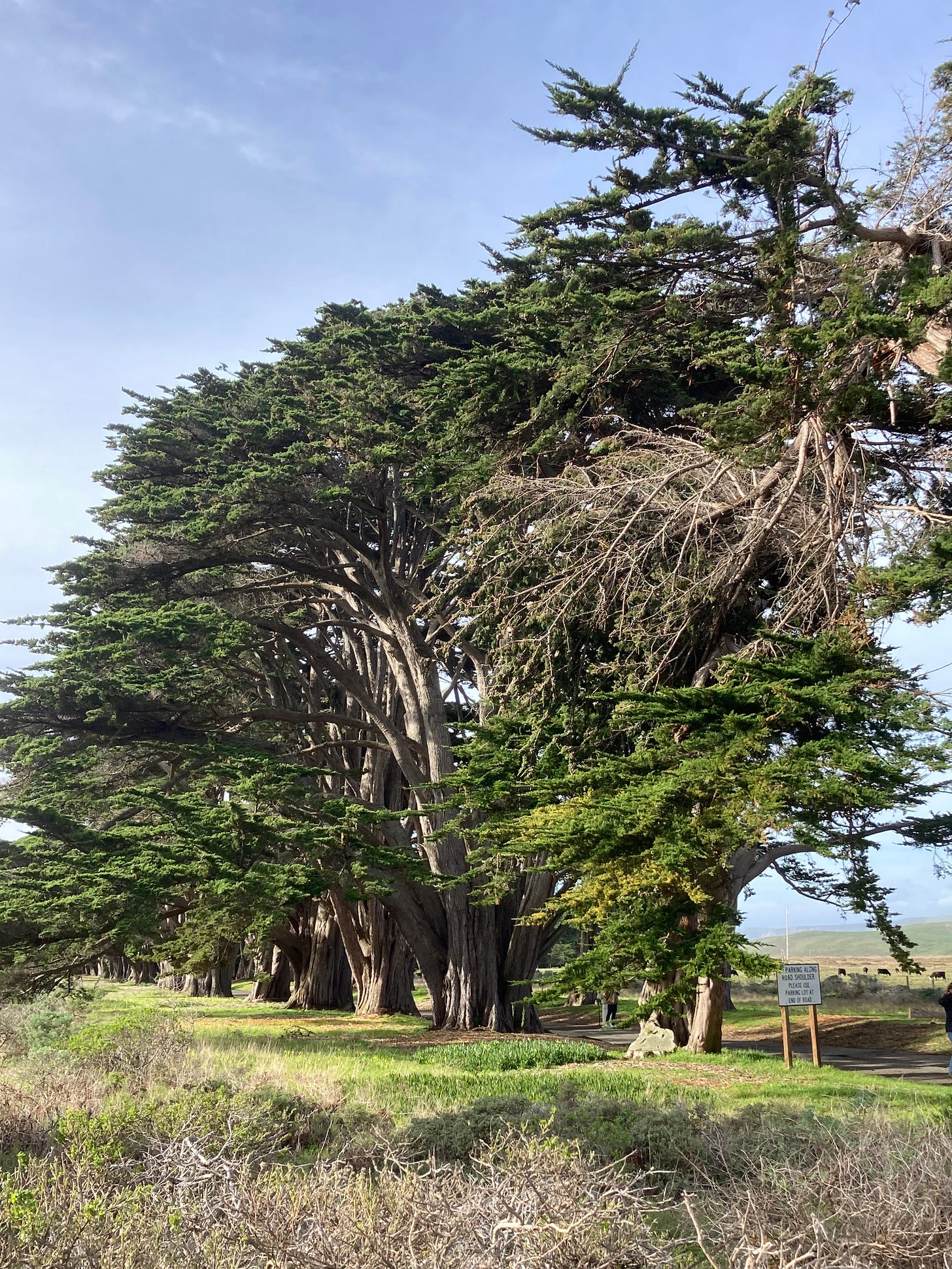The Cypress Tree Tunnel And KPH Radio Station . Marin County California
This time during my trip i tried to explore not so known tourist sites . They turned out to be more intersting and historical . Visiting The Cypress Tree Tunnel had another advantage i could see an old Radio station KPH , now dont ask waht KPH stands for it is the Call sign of the Radio station and it became famous with the call sign itself .
This Cypress tree tunnel and the radio station KPH are located at the Seashore in Marin County, California, is a captivating and picturesque site. This iconic tunnel of Monterey cypress trees (Cupressus macrocarpa) stands near the historic KPH Maritime Radio Receiving Station, which played a significant role in maritime communication during the early to mid-20th century.
The trees were planted around 1930, forming a grand archway leading to the radio station. The purpose of this plantation was both aesthetic and practical. The alignment of the trees created a natural windbreak, protecting the station and its personnel from the harsh coastal winds. Over the decades, the trees grew into the stunning, intertwined canopy that we see today, making it a favourite spot for photographers and visitors.
But Why Cypress Trees?
this I aksed the ranger there why Cypress trees only . These Monterey cypress trees were chosen for several reasons
Adaptability: These trees are well-suited to the coastal environment, withstanding the salty air and strong winds typical of the area. Their resilience made them an ideal choice for creating a natural barrier one of the most important factor and could be well understood by visiting and seeing and how it camoflauged the station .
Longevity: Monterey cypress trees have a long lifespan, which means they could provide enduring protection and beauty.
Growth Pattern: The dense foliage and sturdy branches of Monterey cypress trees can be trained to grow in a specific shape, making them perfect for forming a tunnel or archway.
Benefits of the Cypress Tree Tunnel
Windbreak: Originally, the primary benefit was to act as a windbreak, shielding the KPH Maritime Radio Receiving Station from the powerful coastal gusts.
Aesthetic Appeal: The tunnel has become an iconic landmark, attracting visitors and photographers from all over the world. The natural archway creates a picturesque and serene environment, enhancing the overall experience of the KPH radio station
Environmental Benefits: The trees contribute to the local ecosystem by providing habitat for various wildlife species. They also play a role in soil stabilization and preventing erosion.
Historical Significance: The tunnel adds to the historical value of the area, connecting visitors with the past. It stands as a living monument to the legacy of maritime communication and the natural beauty of the California coast.
Visiting the Cypress Tree Tunnel
When visiting the Cypress Tree Tunnel, you are stepping into a piece of history and natural beauty. The location is accessible via Sir Francis Drake Boulevard, near the northern part of Point Reyes. The best time to visit is during the early morning or late afternoon when the light creates dramatic shadows and highlights the ethereal quality of the tunnel.
Whether you're a history buff, a nature lover, or a photography enthusiast, the Cypress Tree Tunnel offers a unique and memorable experience. It is a testament to the harmonious blend of human ingenuity and nature's splendour, standing as a serene and majestic gateway to the past and present of Point Reyes National Seashore.
KPH Radio Station: A Historical Overview
KPH Radio Station stands as a monument to the golden era of maritime communication. KPH, originally a call sign assigned by the Federal Communications Commission (FCC), became synonymous with excellence in maritime radio communication.
Full Form of KPH
The full form of "KPH" does not correspond to specific words but rather is a designated call sign for the station. Call signs are unique identifiers for radio and television stations, assigned by regulatory bodies like the FCC. "K" is often used for stations west of the Mississippi River.Most defence and para Military persons will understand the significance of the Call sign . i being from the Signaller veteran was really excited to see this old radio station .
Early Beginnings
KPH began its operations in 1905 under the Marconi Wireless Telegraph Company of America. It initially served ships at sea, providing a crucial link for maritime navigation and safety. Over the years, it became one of the most reliable and far-reaching maritime radio stations in the world.
Location and Development
Originally based in San Francisco, KPH moved several times before establishing its receiving station at Point Reyes and its transmitting station in Bolinas, California. The choice of Point Reyes for the receiving station was due to its isolation from urban radio interference, providing clear reception of weak signals from ships far out at sea.
Usage and Achievements
Maritime Communication: KPH was a lifeline for ships at sea, facilitating communication for navigation, safety, and emergencies. It handled distress signals, weather reports, and routine communication.
World War II: During World War II, KPH played a critical role in naval operations, ensuring secure and reliable communication for the U.S. Navy.
Commercial Operations: Post-war, the station continued to serve commercial maritime interests, including the transmission of news and weather information critical to global shipping operations.
Achievements and Importance
Technological Pioneering: KPH was at the forefront of technological advancements in radio communication. It was one of the first to use vacuum tube transmitters and later adopted single sideband transmission, enhancing the range and clarity of its signals.
Global Reach: At its peak, KPH could communicate with ships across the Pacific and Atlantic Oceans. Its signals were heard as far away as Japan and Australia.
Cultural Impact: KPH became known as the "Guardian of the Pacific," a trusted presence in the maritime world. Its sign-off on the airwaves, "San Francisco, KPH," was a familiar and reassuring phrase for mariners.
Closure and Preservation
With the advent of satellite communication and modern digital technologies, traditional maritime radio services like KPH became obsolete. The station ceased operations on July 12, 1997. However, recognizing its historical significance, the Maritime Radio Historical Society (MRHS) and the National Park Service preserved the site.
Today, KPH is part of the Cypress tunnel, where it operates as a museum and a functional heritage station. The MRHS maintains the equipment and occasionally broadcasts using the original call sign KPH, keeping the legacy of maritime radio communication alive.
The KPH Radio Station is a significant historical landmark. It represents a pivotal era in maritime communication, reflecting technological advancements and global maritime history. The preservation efforts ensure that future generations can appreciate the critical role KPH played in ensuring safety and communication at sea. Visitors to the Cypress tree tunnel can explore this rich history, making a connection to the past and understanding the evolution of global communication.



